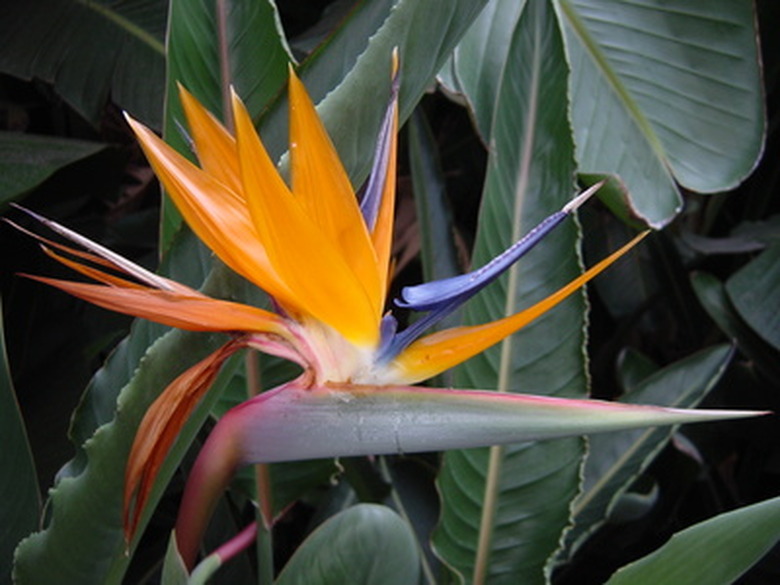Problems With Bird Of Paradise Plants
The bird-of-paradise (Strelitzia reginae) plant is a large, showy shrub that features brilliantly orange and blue flowers that are shaped like birds in flight. Native to South Africa, the bird-of-paradise is commonly grown in subtropical parts of the United States and is popular in cut flower arrangements. The bird-of-paradise plant does not suffer from any serious problems according to Susan Mahr, a master gardener with the University of Wisconsin. There are some pests and other issues that can bother the plant, however.
Caterpillars and Boring Insects
Chewing insects are a common problem with this plant when it is grown outside. Caterpillars and boring insects love to nibble on the bird of paradise's tender leaves and stems. These insect pests–which do not pose a threat to the life of the plant, but can leave behind unsightly holes in the foliage–can be simply plucked off the broad leaves and dropped in a bucket of water to drown. If the shrub is too large, a thorough application of insecticide can be used to kill these bugs.
- The bird-of-paradise (Strelitzia reginae) plant is a large, showy shrub that features brilliantly orange and blue flowers that are shaped like birds in flight.
- These insect pests–which do not pose a threat to the life of the plant, but can leave behind unsightly holes in the foliage–can be simply plucked off the broad leaves and dropped in a bucket of water to drown.
Tiny Sucking Insects
Another problem with bird-of-paradise plants is the infestation of the plant by tiny sucking insects. These insects do not leave holes in the leaves, but they do suck the juices of the plant and leave behind unsightly, sticky honeydew or white webbing. In Aphids, mealybugs, scale and spider mites are all commonly seen on bird of paradise plants–particularly in hot, dry conditions. Spider mites and scale are especially common on indoor, potted plants.
Before resorting to chemical means to get rid of these microscopic pests, you can try gentler means first. With small plants, you might be able to simply wipe the bugs off of the leaves with a rag. Or, you can try washing them away with a strong stream of water. It's a good idea to also rinse away any of the tiny, sticky white webs that spider mites and mealybugs leave behind. A mixture of liquid soap and water can also be used on the plant. The soap suffocates the insects. If all else fails, you can use an insecticide to rid the plant of the pests.
- Another problem with bird-of-paradise plants is the infestation of the plant by tiny sucking insects.
- If all else fails, you can use an insecticide to rid the plant of the pests.
Failure to Bloom
Failure to bloom is a common problem with bird-of-paradise plants. This is usually due to insufficient light. To prevent this, give your plant as much sunlight as possible–preferably 10 to 12 hours. In addition, potted plants are heavy feeders and need to be fertilized every two weeks in the summer with a balanced (10-10-10), water-soluble fertilizer.
